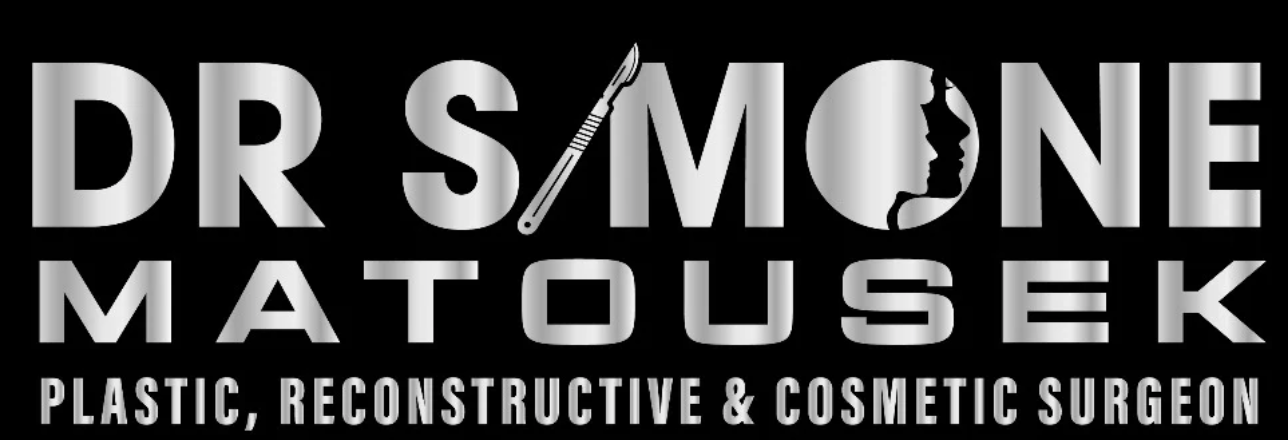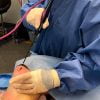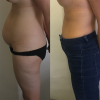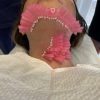Sydney plastic surgeon Dr Simone Matousek has a special interest in breast fat transfer which she has been doing for over 10 years. Nevertheless, she still does a lot of breast implants as not everyone is suitable for a fat graft. All plastic surgeries are performed in Sydney in accredited hospital facilities.
Here she outlines who might be best with breast implants, breast fat transfer or a combination of breast implants and fat transfer.
Breast fat transfer is best in:
–Those who do not want to commit to further breast augmentation surgeries during their lifetime
Even if a fat graft does not give you as great a volume as an implant, there is not the need to undergo surgery again.
-Those prone to bad scarring due to genetic factors
Olive and dark skin can scar badly, leading to hypertrophic or keloid scars. A breast implant requires a minimum 5cm scar and sometimes a larger one for subsequent exchanges. The scars from fat grafting are less than 1cm and usually well hidden in creases.
-Those who would have concerns they would consider liposuction for
Liposuctioned fat can be placed into the breast at the same time.
-Those undergoing abdominoplasty at the same time
Tummy tucks usually involve lipocontouring of the flanks for best results. This fat can be used to augment the breasts
-Those with a good starting volume who just want to improve it a bit or have reduced volume postpartum
In someone with a good volume or breast shape, a fat graft can give a good change without undergoing the risks of an implant for an already reasonable breast. The more volume and space in the breast, the larger the amount of fat that can be placed.
-Those against breast implants due to the small risk of breast implant associated cancer and other complications
There is increasing concern that breast implants can be associated with breast implant illness or a rare implant associated cancer (BIA-ALCL). Information about this is available in other website sections. While the risks are not great enough to consider removing breast implants, for some it is not acceptable for a device to carry any risk however slight of cancer for a cosmetic procedure.
–Those who want a breast augmentation prior to one or more pregnancies
If pregnancy is on the horizon within a few years of a breast augmentation, in most cases, this will lead to a need for early revision surgery, especially if multiple pregnancies are foreseen. Breast fat transfer is more likely to move with the native breast as it fluctuates in size; with an implant the device tends to sit high as the breast tissue sags over the top of it.
-Breast asymmetry
Many patients with breast asymmetry due to congenital problems or post lumpectomy for breast cancer do not want any operation on the non-affected breast. If an implant is used on one side, usually an implant is required on the other side, as the implanted side tends to always sit higher .
Even in minor cases of breast asymmetry, this is better corrected with a fat graft as the fat can be placed exactly where it is needed.
-Constricted or tuberous breast
There is a specific blog on how fat grafting works in this condition. With constriction of the breasts, the constricted areas are often like a resistant elastic band that springs back if fat is not placed in the area. Serial fat grafting can help gradually correct areas of constriction.
Breast fat transfer who is not a suitable candidate:
-Those without adequate body fat stores
There are some patients where the risk of liposuction defects outweighs the small volume augmentation that will be gained. If there is no excess fat, especially in the thigh area, the risks of trying to take fat can lead to problems. How much fat can be taken is also determined by people’s skin; not all the fat can be emptied out in people with skin that is already exhibiting problems such as stretch marks or wrinkling.
–Those wanting a large volume change with a single operation
Fat grafting will not give the results of an implant in one operation. In fact due to the way native tissues move, it will always feel softer and have much less lifting capacity. More than one fat graft may seem like it costs a significant amount , however the long term costs of implant exchanges are greater. A second fat graft typically does better than the first as there is more volume to graft to.
–Those wanting prominent cleavage
Those with significant volume loss in the upper part of the breast who want a cleavage that sits high; only an implant can achieve this.
Breast implants are best in:
-athletic people
Although some athletes do have pockets of fat, gruelling training regimens can lead to constant metabolism of the fat and gradual reduction in graft size
-patients who fluctuate in weight
Any breast augmentation gives the best results when someone is at their target weight. However, fat grafting will lead to disappointing results if weight is lost after the surgery. If you are considering fat transfer it is best to be at your target weight or slightly less when having surgery.
-candidates for a breast lift with implants alone
To achieve a slight lift with implants is possible in those with a nipple that
-wanting a large volume change in a single operation
The most common complaint with fat grafting is achieving a smaller than desired size, especially with one surgery.
Multiple breast fat graftings are initially a more complex and costly way of attaining a large volume change, however, the patient never needs to do any further surgeries again in in their lifetime.
With large volume fat grafting, oil cysts or small areas of fat necrosis can sometimes create mammographic changes. This is why all Dr Simone’s large volume fat grafting patients have an MRI combined with mammogram or ultrasound pre-operatively. This precise screening test allows comparison down the track if any changes occur.
Fat transfer has never been associated with triggering breast cancer. However, the changes described above can look similar on breast imaging. Experienced radiologists are usually able to tell the difference between fat transfer changes and those of breast cancer. In cases they are not sure, this may require biopsy. A biopsy, although a nuisance, is an outpatient procedure. The alternative (breast implants) require exchanges, a much more major undertaking.
The most common complaint with implants is the need for exchanges down the track.
People need to be aware that implants are not a lifetime device. Revision surgery is not the same as a primary surgery; it is more lengthy and complex, therefore more costly.
With each breast augmentation revision, overlying tissues are thinned and precise adjustments need to be made that the implant does not move in what is a larger pocket.
While they are not causing a problem; breast implants should not be removed. Like any device they wear and will not look as good as the years pass. There are patients lucky enough to have their implants for many years; some even well beyond 10 years.
They are encased in the body’s own scar tissue, so even if there is subclinical rupture, modern silicon gel does not tend to leak as its consistency is like a jelly baby.
Breast implant exchange-reasons they may last less than the average time
-early capsular contracture
An early capsule or hardening can occur often without any trigger. Sometimes one or two years after surgery one side can start to harden or distort. This will require further surgery.
-pregnancies and weight fluctuations
These alter the overlying tissues and mean they do not drape correctly over the breast implant.
-movement
Polyurethane coated implants are the only technology that due to their fur coating, integrate to prevent movement. These are now not available in Australia. All other textured implants carry a slight risk of movement over time which can lead to problems such as an excessive gap or asymmetry in the cleavage area.
-rupture
Rare, even signficant trauma is unlikely to cause rupture, breast implants are fairly resilient.
Breast fat transfer combined with breast implants is best in:
-Extremely thin chested patients with a small fat pocket that is safe to harvest
Even skinny people can have enough fat to cover any implant visibility in the cleavage and upper pole area. Most people will achieve a natural enough result if an appropriate implant is chose without needing to do both.
-Post breast implant removal and replacement and capsulectomies in a patient with poor tissue cover
In a capsule that has been thick, calcified or in the case of an implant rupture, patients can be left with tissue defects or depressions that can be filled with fat.
-Breast asymmetry
Often it can be best to use two same size implants and correct a specific area of asymmetry. Different size implants have different base widths therefore are less precise in correcting asymmetry; fat can be placed exactly where needed.
-Tuberous breast or constricted breast
As stated before can improve risk of recurrence of constriction ring and therefore the risk of double bubble with a breast implant.
For more information about breast fat grafting click here.
For more information about breast augmentation with implants click here .
For information about implant devices in Australia you can visit the Therapeutic Goods Australia (TGA) breast implant hub.





